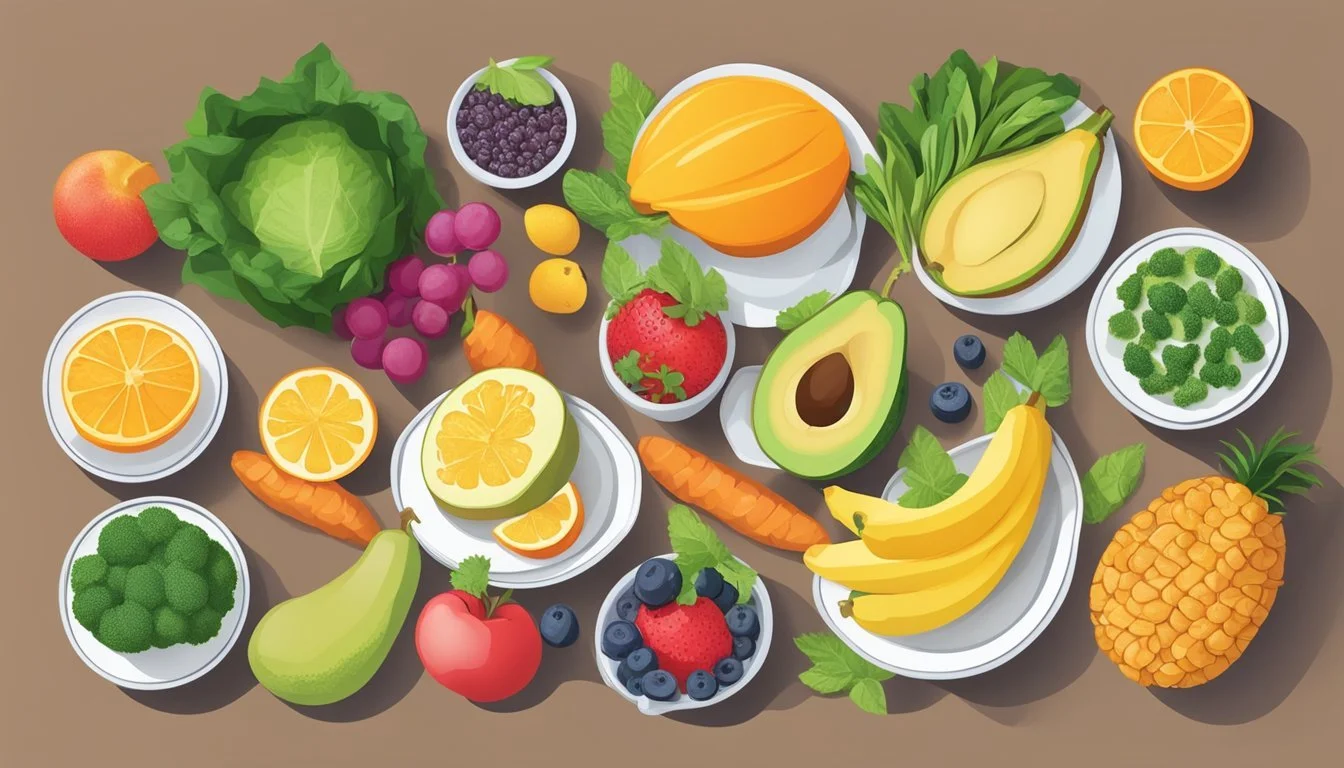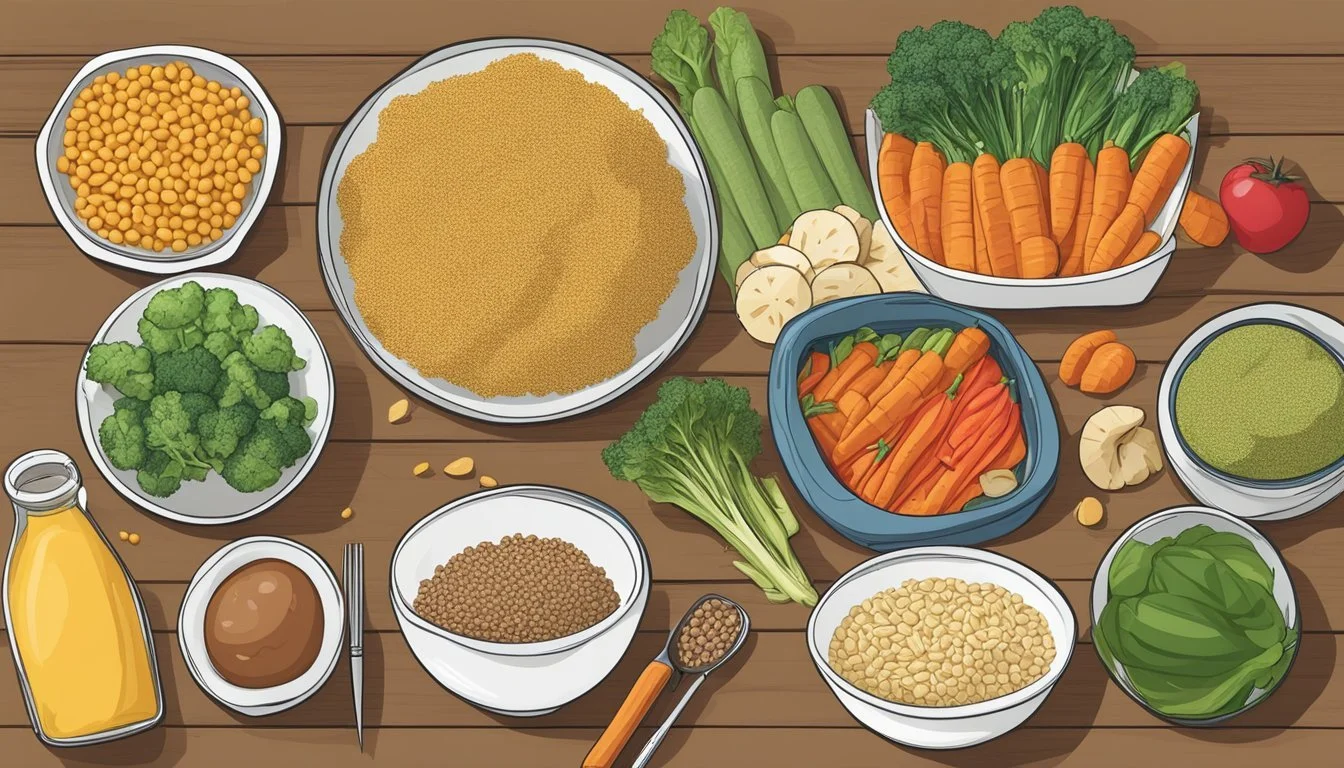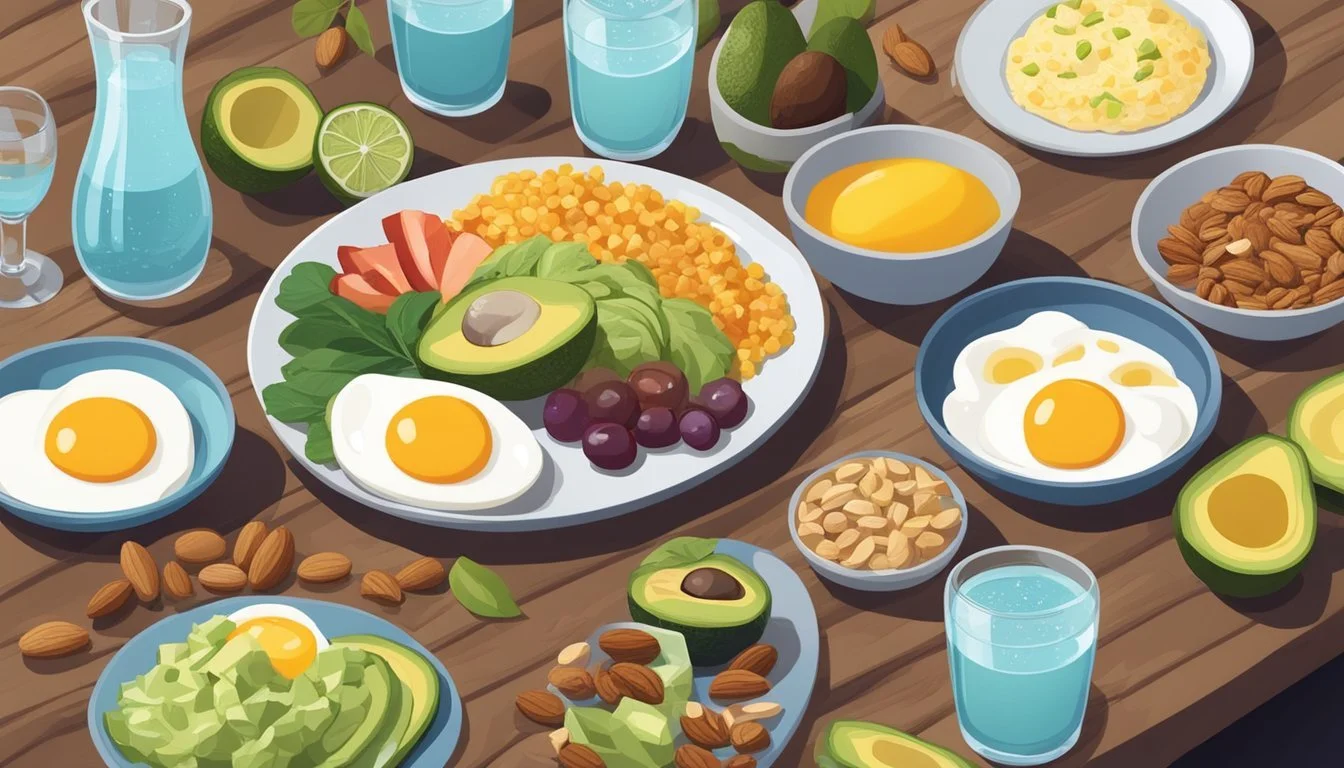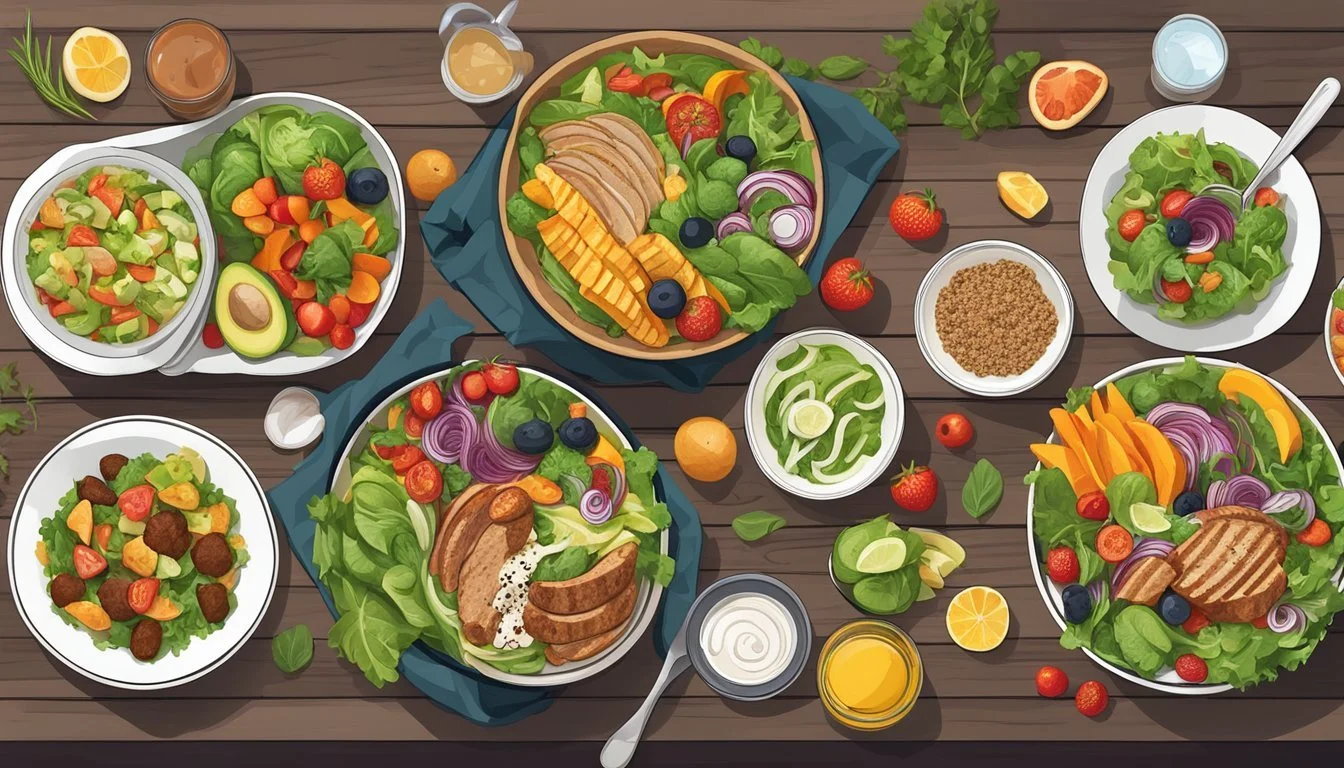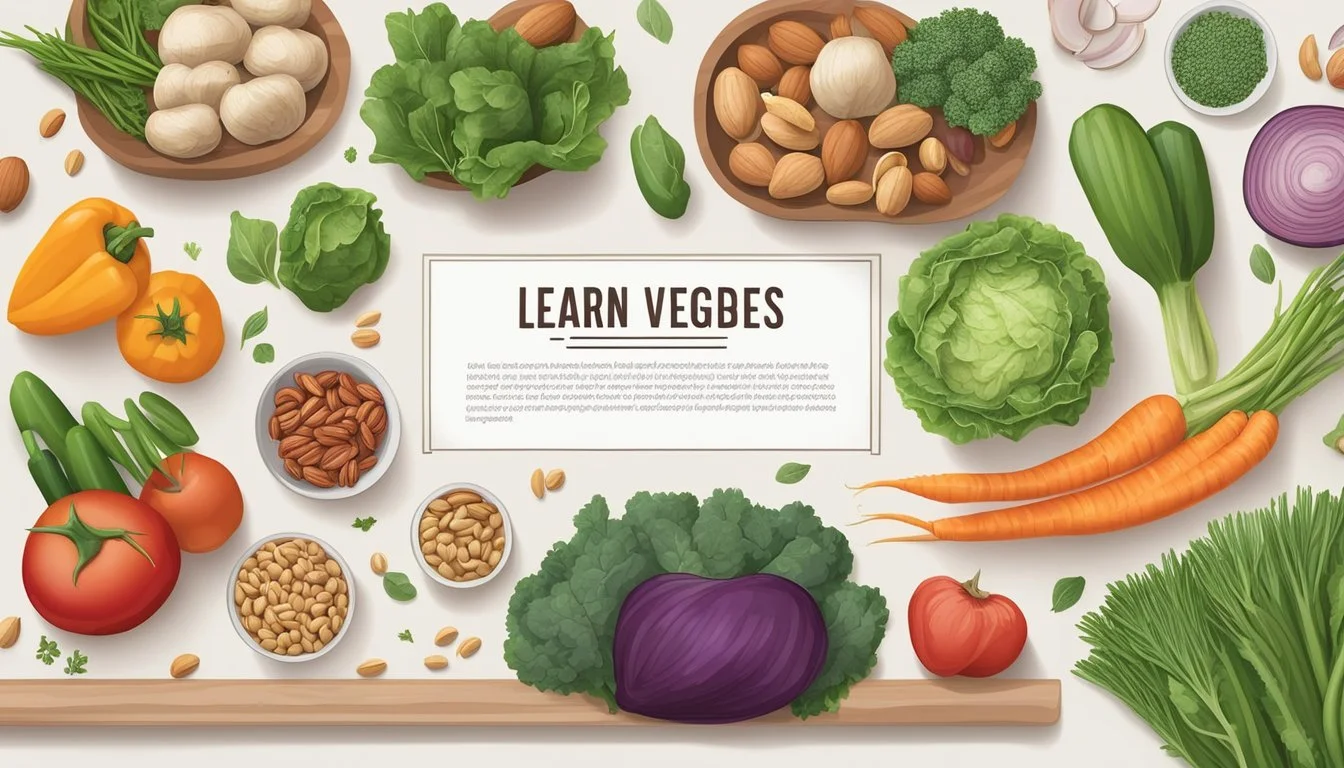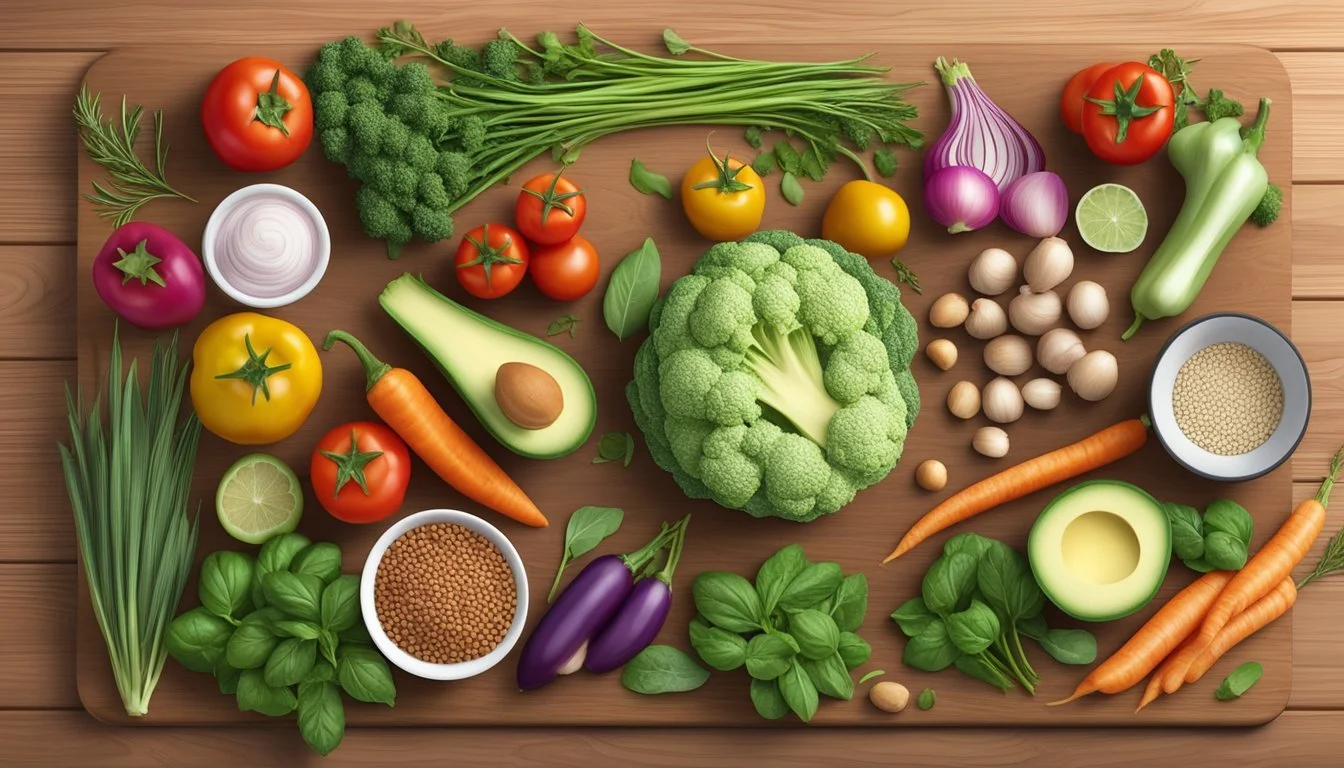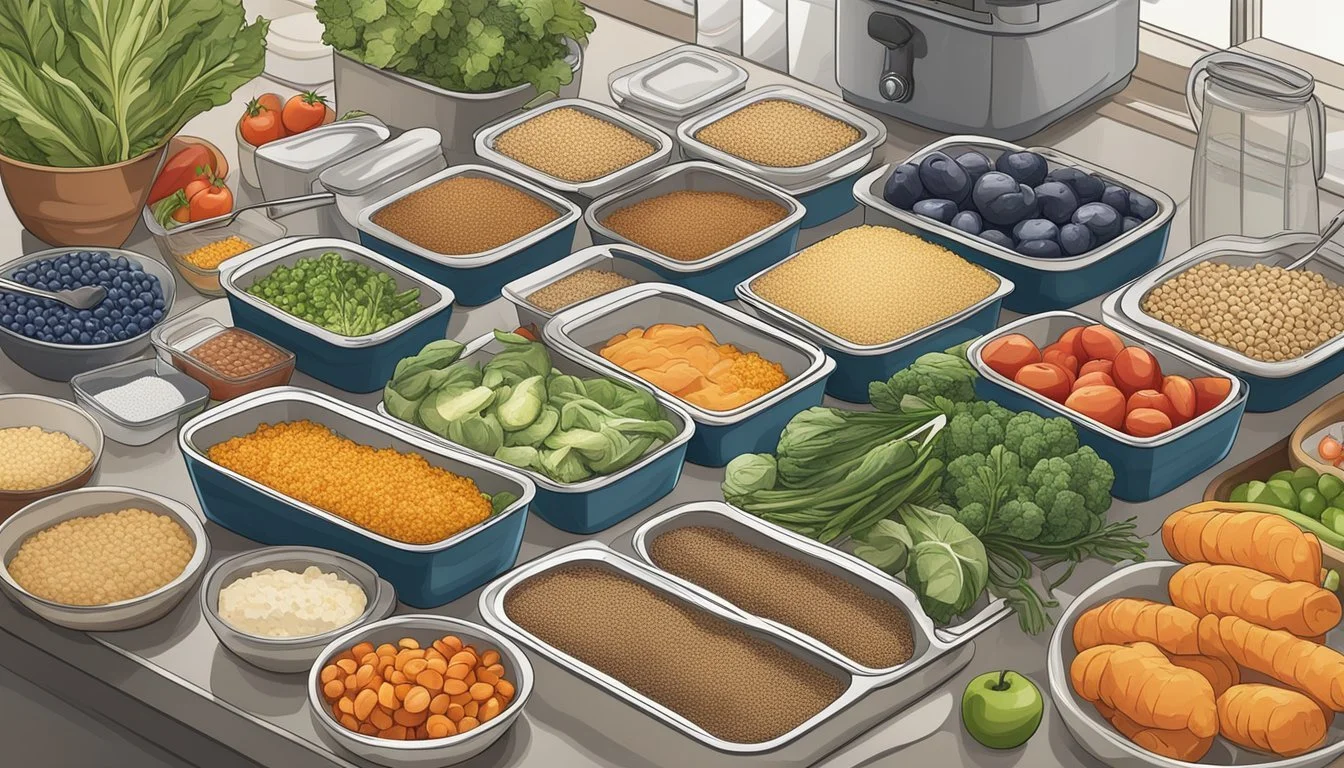How to Create a Balanced Grain-Free Meal Plan
Essential Nutrients and Recipes
A grain-free meal plan is an approach to eating that excludes all forms of grains, including wheat, corn, rice, and oats. This diet emphasizes whole, unprocessed foods and often incorporates a higher intake of vegetables, fruits, proteins, and healthy fats. While some adopt a grain-free diet to address specific health issues, others may choose it for general well-being or to support digestive health. Regardless of the reasoning, creating a balanced grain-free meal plan ensures that one's nutritional needs are met without relying on grains.
Achieving a healthy, balanced diet while avoiding grains involves careful meal planning and consideration of the nutrients typically provided by grains. Proteins play a significant role in this dietary approach, with a variety of sources such as meat, fish, eggs, and dairy products for those not lactose intolerant. Plant-based proteins like legumes, tofu, and tempeh also enrich the grain-free diet with essential amino acids. Additionally, starchy vegetables and pseudocereals, like sweet potatoes and quinoa, can serve as substitutes for traditional grain-based foods, providing energy and fiber.
It's important for individuals following a grain-free meal plan to ensure they are not only eliminating grains but also replacing them with nutrient-dense alternatives to maintain a balanced diet. Incorporating a diverse array of foods allows for an assortment of vitamins, minerals, and other nutrients, supporting overall health. When developing a grain-free meal plan, it's also beneficial to create a preparation schedule that aligns with one's lifestyle, making the transition smoother and more sustainable in the long term.
Creating a balanced grain-free meal plan is a wonderful opportunity to embrace a diverse array of grain-free nutrient-dense foods while reaping the benefits of a grain-free nutritional impact. Whether it's incorporating wholesome options like grain-free granola or prioritizing sources of grain-free fiber from fruits, vegetables, and seeds, a well-rounded meal plan can cater to a variety of health and fitness goals.
For individuals focused on grain-free muscle building or seeking to optimize their athletic performance, including lean proteins, healthy fats, and a variety of nutrient-dense foods can provide the essential building blocks for strength and recovery. Additionally, a balanced grain-free meal plan can be beneficial for individuals experiencing grain-free weight loss plateaus, offering a fresh approach to support their wellness journey.
By crafting meals that prioritize whole, unprocessed foods and a diverse range of nutrients, individuals can create a balanced grain-free meal plan that supports their overall well-being and specific health objectives. This approach fosters a sustainable and health-conscious dietary regimen that aligns with diverse lifestyle needs.
Understanding Grain-Free Diets
Grain-free diets eliminate all grains and focus primarily on other food groups. This approach is sometimes adopted by individuals managing specific health conditions or seeking certain health benefits.
Benefits of a Grain-Free Meal Plan
A grain-free meal plan may reduce symptoms for those with celiac disease, which requires strict avoidance of gluten to prevent damage to the small intestine. Similarly, people with non-celiac gluten sensitivity may experience relief from digestive discomfort and improved health upon eliminating grains from their diet. Some proponents suggest that a grain-free diet can decrease inflammation often associated with autoimmune diseases and chronic conditions like inflammatory bowel disease.
Potential Health Impacts
While a grain-free diet can offer benefits, especially for those with specific health concerns, it's essential to ensure the diet is balanced and nutritious. The exclusion of grains could lead to deficiencies in certain vitamins and minerals, as grains are a source of dietary fiber and B vitamins. It's important for individuals to be aware of these potential nutritional gaps and plan to obtain essential nutrients through other food sources or supplements, as recommended by a healthcare professional.
Essentials of Meal Planning
Effective meal planning is a systematic approach to organizing one's diet, particularly when adhering to a grain-free regimen. It involves defining objectives and structuring meals that encompass a spectrum of nutrients to ensure a well-balanced diet.
Setting Your Goals
One begins by establishing clear dietary goals. Whether the aim is weight management, dealing with sensitivities, or improving overall health, goals guide the selection of suitable ingredients and meals. Budget is also a critical aspect; meal planning helps one allocate money wisely, minimize waste, and stick to a schedule that suits their lifestyle.
Creating a Varied Meal Structure
Diversity in meals is paramount to cover all nutritional bases. A well-thought-out meal structure should include:
Proteins: Choosing a variety of animal and plant-based proteins such as meats, fish, eggs, legumes, and tofu.
Vegetables and Fruits: Ensuring a range of colors and types to access different vitamins and minerals.
Healthy Fats: Incorporating sources like avocados (how long does avocado last?), nuts, seeds, and olive oil.
Dairy or Dairy Alternatives: Selecting products like cheese, yogurt, or plant-based substitutes for those who tolerate them.
A grocery list is a crucial tool for ensuring that all ingredients needed for the week's meals are purchased in one go, which saves time and money. It allows for strategic shopping, reducing the chances of impulse buying and ensuring that ingredients correlate with the planned meals for the week.
Building a Balanced Breakfast
Creating a healthy, balanced breakfast without grains can be a fulfilling way to start the day. A key focus should be on including protein, which is essential for repairing tissues and maintaining muscle mass. Sources of protein suitable for a grain-free breakfast include eggs, lean meats, and dairy products like yogurt or cheese. Incorporating these sources can help one stay full and energized.
For those avoiding dairy, alternative protein-rich options like nuts and seeds offer the added benefits of heart-healthy fats and fiber. Options such as almonds, walnuts, and chia seeds not only provide the necessary protein boost but also contribute to the meal’s satiety.
In terms of vegetables, one might add a half sweet potato to their meal. It offers complex carbohydrates and fibers that are essential, especially when grains are not present. Vegetables like spinach or kale can also be included to increase nutrient density. For example, a spinach omelette can be a great way to infuse greens into the first meal of the day.
Fruits should not be overlooked in a grain-free plan. They add natural sweetness, vitamins, and fiber. Avocado, often categorized as a fruit, is particularly beneficial due to its high content of healthy monounsaturated fats. It can be sliced up and served alongside eggs for a well-rounded breakfast.
Here is a simple table for a quick grain-free breakfast combination:
Protein Source Fruit/Vegetable Healthy Fat Eggs Tomato slices Avocado with sesame seeds Greek yogurt Blueberries Almonds Smoked salmon Sliced bell peppers Ground flaxseed
When one cooks their breakfast, they should focus on simplicity and nutrient density. Grain-free recipes can easily be adapted to fit a balanced meal plan by prioritizing these key components.
Lunch Options and Ideas
When creating a grain-free lunch (What wine goes well with lunch?) plan, selecting a variety of vegetables as the base is essential. These provide necessary fiber and nutrients. For protein, cooks can choose from a range of meats such as chicken, turkey, fish, or seafood, as well as plant-based options like tofu or tempeh.
Hearty Soups: A robust soup with a meat or legume base supplies protein and is convenient for meal prep. Soups can easily include a variety of leftover vegetables to enhance nutrient intake.
Salad Bowls: Incorporating fresh greens and a colorful assortment of vegetables ensures a fiber-rich meal. Adding chicken, tuna, or boiled eggs increases the protein content. Mason jar salads are perfect for meal prep; just tip them into a bowl and dress before serving.
Lunch Wraps:
Lettuce Wraps: Use large lettuce leaves to wrap ingredients like chicken or tuna salad.
Vegetable Wraps: Slice vegetables and pair with hummus in a grain-free wrap alternative such as a collard green leaf.
Protein and Veggie Combos: Pairing slices of turkey or chicken with avocado, alongside raw cut vegetables, provides a balanced meal. Even without grains, options like whole grain crackers can be included for those not strictly avoiding all grains.
The following table lists sample grain-free lunch options:
Protein Source Vegetable Pairing Preparation Style Notes Chicken Slices Mixed Greens Salad Bowl Customize with preferred vegetables Boiled Eggs Avocado Slices Snack Plate Easy to prepare and pack Smoked Salmon Asparagus Spears Protein & Veggie Good source of Omega-3 fatty acids Beef Jerky Bell Pepper Strips Jerky & Crunch Ideal for a high-protein on-the-go snack
These lunch ideas provide a starting point for those seeking grain-free meal options. They allow for customization according to individual taste preferences and dietary requirements, ensuring a balanced and enjoyable lunch experience.
Dinner Solutions for Every Night
When constructing a grain-free dinner plan, families should focus on including a variety of proteins, vegetables, and healthy fats. A well-crafted meal plan ensures every dinner (What wine goes well with dinner?) is not only nutritious but also diverse to keep the diet interesting.
Monday: Moroccan-Spiced Chicken
A sheet pan dinner with chicken, sweet potatoes, carrots, and cauliflower can start the week off strong. Season with cumin, turmeric, and cinnamon for rich flavor. Serve this atop a bed of leafy greens for an extra nutritional punch.
Tuesday: Zucchini Noodle Stir-fry
Spiralized zucchini provides a grain-free alternative to traditional pasta. Toss in a variety of vegetables such as bell peppers and snap peas. Choose shrimp, beef strips, or tofu as your protein, and stir-fry with ginger and garlic.
Wednesday: Cabbage Wraps
Substitute grains with crunchy cabbage leaves, wrapping up fillings like ground turkey, avocado, and diced tomatoes. Incorporate spices or a drizzle of homemade sauce for added flavor.
Thursday: Pork Loin and Veggies
Cook a pork loin on a sheet pan with brussels sprouts and sliced apples. The combination offers a hearty, comforting meal that is simple to prepare and clean up.Friday: Chicken Chili Verde
Utilize the slow cooker to make a chicken chili. Green chilies, onions, and white beans contribute to a satisfying, flavor-packed dish that is perfect for winding down the week.
Saturday: Fish Fillets with Mixed Roasted Veggies
Opt for a light dinner with baked or grilled fish fillets, seasoned with herbs and lemon. Accompany with a medley of roasted veggies like asparagus and bell peppers.
Sunday: Mini Meatloaves
Individual meatloaves using ground chicken or beef mixed with chopped veggies provide a personalized touch to the family meal. Pair with a side of roasted non-starchy vegetables such as broccoli or zucchini.
Preparing the week’s dinners can be streamlined by using similar ingredients across meals to minimize waste and reduce preparation time. This strategic approach to meal planning caters to those seeking a grain-free diet without compromising on taste or variety.
Choosing Healthy Snacks
When planning grain-free snacks, one should emphasize a balance of macronutrients. These balanced options can support sustained energy and contribute to an overall nutritious diet. Snacks incorporating a mix of proteins, healthy fats, and fiber are ideal.
Protein sources could include:
Nuts such as almonds, walnuts, or pecans
Seeds like pumpkin, chia, or sunflower seeds
Legumes, including edamame and chickpeas
For healthy fats, one might consider:
Avocado
Olive oil (as a dressing)
Fats from nuts and seeds already listed under proteins
In terms of fiber, fresh fruits and vegetables are excellent choices. They not only offer dietary fiber but also a wide array of vitamins and minerals. Some suitable fruit and veggie options are:
Berries (strawberries, blueberries, raspberries)
Sliced bell peppers
Carrot sticks
Cucumber slices
Individuals should be conscious of their calorie intake, and hence portion control is vital. Snacks are meant to be smaller than regular meals, serving to tide one over until the next meal. Each snack portion should be appropriately sized to fulfill energy needs without exceeding daily caloric goals.
Here are some simple grain-free snack recipes to try:
Cucumber rounds topped with smoked salmon and dill
Miniature lettuce wraps with turkey and avocado
One should make snack selections based on their health goals, dietary needs, and preferences, ensuring variety for nutritional adequacy and satisfaction.
Alternatives to Common Grains
In a grain-free meal plan, the key is identifying nutrient-dense alternatives to staple grains such as wheat, oats, and rice. This section will explore the most effective replacements, focusing on pseudocereals, versatile non-starchy vegetables, and protein-rich legumes.
Exploring Pseudocereals
Pseudocereals, unlike true grains, are seeds that are consumed as grains but don't grow on grasses. They are complete sources of protein, which means they provide all nine essential amino acids. Examples include:
Amaranth: A gluten-free option rich in fiber and antioxidants.
Buckwheat: Despite its name, it's not related to wheat and is a good source of important minerals.
Quinoa: Known for its high protein content, quinoa also offers a rich supply of fiber and B vitamins.
Non-Starchy Vegetables as Substitutes
Non-starchy vegetables can mimic the texture and bulk of grains in a meal. They are low in calories and high in vitamins, minerals, and fiber. They work well in recipes as grain alternatives:
Cauliflower: Grated into 'rice' or used as a pizza crust base.
Zucchini Noodles: Spiralized to create a pasta-like dish, commonly known as 'zoodles'.
Squash: Varieties like spaghetti squash naturally separate into long strands, resembling pasta.
Legumes and Their Benefits
Legumes are an excellent addition to a grain-free diet because of their high protein and nutrient content. They serve as a significant source of fiber and help stabilize blood sugar levels. Common legumes to include are:
Beans: Such as black beans, chickpeas, and kidney beans, are versatile and filling.
Lentils: Available in various colors, they cook quickly and can be added to salads, soups, and stews.
Edamame and Tofu: Derived from soybeans, they provide high-quality plant protein and fit well into various dishes.
Understanding Labeling and Ingredients
When embarking on a grain-free diet, scrutinizing labels and ingredients is crucial. A product labeled as "gluten-free" does not necessarily mean it is grain-free. Gluten is a specific type of protein found in wheat, barley, and rye, while "grain-free" encompasses all grains, including gluten-free grains such as quinoa and rice.
One should look for ingredients that are used as alternatives to grains:
Starches: Potato, tapioca, and arrowroot are commonly used.
Flours: Almond, coconut, and chickpea are popular grain-free choices.
Sweeteners: Honey, maple syrup, and stevia might replace sugar in grain-free products.
Reading labels carefully helps identify hidden grains and additives. Consumers must be vigilant about derivatives like malt (from barley) and corn syrup, which is a grain-based sweetener. Products may also have phrases like "contains no wheat," which is not synonymous with grain-free.
Fibers are an essential part of a balanced diet. For grain-free options, individuals should look for high-fiber alternatives such as nuts, seeds, and certain vegetables.
Here's a quick reference to distinguish between food labels:
Label Type Meaning Gluten-free No gluten, but could contain other grains Grain-free No grains of any kind No added sugar No extra sugar added, but check for natural sugars Organic Grown without synthetic pesticides, but not necessarily grain-free
A well-informed consumer recognizes that "sugar-free" options may still contain carbohydrates or artificial sweeteners. Thus, it's advisable to monitor the ingredients list for both sugars and fibers to maintain a balanced meal plan devoid of grains.
Navigating Social Situations and Dining Out
When individuals adhering to a grain-free diet venture out to dine or attend a social gathering, planning is paramount to maintaining their meal plan. Dining out does not have to be a challenge if approached with the right strategy.
Firstly, prior to attending a social event or family gathering, one should not hesitate to communicate their dietary needs. Politely informing the host or the restaurant about their grain-free requirements can lead to accommodations such as special dishes that feature peppers, fresh fruit, or other grain-free ingredients.
Restaurants are increasingly aware of diverse dietary needs and often provide options that cater to grain-free diets. Look for dishes centered around protein and vegetables. It may be beneficial to review the restaurant's menu ahead of time or contact them to discuss grain-free options.
Below is a simplified grocery list to keep in mind that can guide choices when dining out or when suggesting what foods would be suitable for social events:
Fresh Vegetables: peppers, leafy greens, broccoli
Quality Proteins: grilled chicken, fish, beef
Healthy Fats: avocados, nuts, olive oil
Fresh Fruit: berries, apples, pears
By keeping such a list in mind, individuals can confidently and clearly select or request modifications to dishes, such as substituting grain sides with vegetables or asking for a fruit plate instead of a grain-based dessert.
One should remember that the key to navigating these scenarios is openness and the ability to adapt while staying true to their grain-free commitments. With this approach, they can enjoy social dining experiences without compromising their meal plan.
Implementing Grain-Free Cooking Techniques
When transitioning to a grain-free diet, chefs and home cooks alike adapt their cooking techniques to suit new ingredients and recipes. Planning meals without grains requires a thoughtful approach to selecting, preparing, and cooking food that ensures a balanced and enjoyable diet.
Choosing the Right Tools and Equipment To facilitate grain-free cooking, one should ensure their kitchen is equipped with the right tools. Essential items include:
High-speed blenders for creating grain-free flours from nuts and seeds.
Food processors for dough preparation and vegetable chopping.
Spiralizers for making vegetable noodles as a pasta substitute.
Adapting Recipes Adapting traditional recipes to meet grain-free needs commonly involves ingredient substitutions. Chefs may use:
Almond or coconut flour in place of wheat flour.
Lettuce leaves or nori sheets for wraps instead of bread or tortillas.
Cauliflower rice as an alternative to traditional rice dishes.
Cooking Methods Certain cooking methods prove especially useful in grain-free cuisine:
Steaming and Roasting: These methods preserve the integrity of vegetables when they substitute grains as the meal's base.
Baking: Adjusting temperature and time is often necessary when utilizing grain-free flours, as they have different properties than grain-based flours.
In conclusion, integrating grain-free techniques into one's cooking repertoire enhances the ability to create diverse, healthful, and satisfying meals. Through the application of suitable equipment, tweaks to standard recipes, and mastering alternative cooking methods, individuals can successfully maintain a grain-free diet without compromising on taste or nutrition.
Grain-Free Baking Essentials
When embarking on grain-free baking, the selection of appropriate alternative flours is crucial. Nut flours, such as blanched almond flour, provide a hearty base for cookies and other baked goods. Coconut flour, recognized for its high fiber content, is another staple in grain-free baking. It's absorbent and lends a mildly sweet flavor, making it well-suited for treats like pancakes and muffins.
The use of sweet potato flour can also enhance the nutritional profile of baked goods, infusing them with fiber, vitamins, and a subtle sweetness. Sweet potato flour works well in recipes like bread, muffins, and cookies, providing a natural moisture that may reduce the need for added fats.
Here's a quick reference table of the flours and their common uses:
Grain-Free Flour Characteristics Common Uses Almond Flour Rich, nutty flavor Breads, cookies, cakes Coconut Flour High fiber, absorbent, sweet Baking, thickening, pancakes Sweet Potato Flour High fiber, naturally sweet Breads, muffins, cookies
Bakers should note that the substitution of grain-free flours in traditional recipes often requires an adjustment of other ingredients. For instance, coconut flour demands more eggs or liquid since it is highly absorbent. It is also recommended to mix grain-free flours to achieve the right balance of flavor and texture.
Meal Prep and Storage Tips
When creating a grain-free meal plan, preparation and storage are the keystones of maintaining a well-balanced diet throughout the week. Meal Prep should start with a clear schedule, dedicating specific times for cooking to streamline the process. Bulk preparation can save time and ensure consistency in one's diet.
Time Management: Allocating time blocks for meal preparation helps in organizing the cooking process efficiently. One may prefer preparing meals for the entire week on a Sunday or splitting the cooking sessions into two days—perhaps Sunday and Wednesday.
Sequential Cooking: Tackling recipes with longer cooking times first is beneficial. Focusing on these dishes allows for a more efficient use of time, as while they cook, one can prepare quicker recipes.
Storage Techniques:
Leftovers should be cooled down safely before storing to prevent bacterial growth.
Prepared meals must be stored in airtight containers to maintain freshness and avoid cross-contamination.
Utilizing the refrigerator space wisely is crucial. Staggering dishes on different shelves improves airflow and uniform cooling.
List of essentials for Grain-Free Meal Prep Storage:
Labels for date and content tracking
Clear refrigerator space for air circulation
Separate containers for raw and cooked foods
Utilizing Leftovers: Rather than discarding, one can repurpose leftovers into new meals. For instance, roasted vegetables from dinner can become part of a hearty grain-free frittata for breakfast.
A person adhering to a grain-free meal plan with an array of fresh ingredients and a solid preparation strategy can ensure meals stay appetizing and nutritious. Establishing a routine in meal prepping and adhering to proper storage guidelines are paramount for sustained health and enjoyment of grain-free meals.
Monitoring Your Health and Adjusting Your Plan
Crafting a balanced grain-free meal plan is vital for health and wellbeing. One should pay close attention to their body's responses to dietary changes and ensure their energy needs are met.
Paying Attention to Your Body's Signals
When one eliminates grains, they must stay vigilant about their body’s reaction, especially concerning digestion and any potential dairy sensitivities. Signs of improved digestion or distress can both emerge and should be carefully monitored. For instance:
Improved digestion may manifest as less bloating or discomfort.
Conversely, one might experience constipation or other digestive issues due to the fiber change from the absence of grains.
If dairy products are included in the grain-free diet, it's essential to observe how the body responds, as dairy can be a common allergen or intolerance for many.
Balancing Calorie Intake and Expenditure
A grain-free diet should balance calorie intake with energy expenditure, particularly for those seeking to lose weight. A calorie deficit, where one consumes fewer calories than expended, can lead to weight loss. Here’s how one can manage their calorie balance:
Calculate Basal Metabolic Rate (BMR): Determine the number of calories the body needs at rest.
Track Physical Activity: Include exercise calories burned to understand total daily energy expenditure.
Monitor Food Intake: Use a food diary or app to record all consumed foods and their calorie content.
Adjust Portion Sizes: Ensure serving sizes match energy needs and goals.
It's critical to consume nutrient-dense foods that support metabolism and overall health without grains. A balanced meal plan can provide the necessary calories and nutrients, promoting long-term health benefits and weight management.
Financial Planning for a Grain-Free Diet
Transitioning to a grain-free diet often means adjusting one's grocery shopping habits and budget. For a smooth financial transition, careful planning is paramount. Individuals should start by crafting a detailed grocery list to prioritize grain-free staples, such as meats, fish, dairy products, legumes, and various plant-based alternatives like tofu and tempeh.
Purchasing in bulk can lead to significant savings, especially for non-perishable items like nuts, seeds, and legumes. Bulk buying reduces the cost per unit and can offer a steady supply of essentials without the need for frequent shopping trips.
To manage their budget effectively, consumers may find it beneficial to compare prices at different stores or consider generic brands, which tend to be less expensive than name brands. It is also worthwhile to keep an eye out for sales and discounts on fresh produce and protein sources.
Here are key strategies for financial planning:
Create a Weekly Meal Plan: Plan meals ahead to prevent impromptu purchases that can inflate the grocery bill.
Stick to the Grocery List: Buy what's needed to avoid unnecessary and potentially costly items.
Buy Seasonal Produce: Seasonal fruits and vegetables are often more affordable and at their peak flavor.
Consider Frozen Options: Frozen meat and vegetables can be less expensive and last longer, reducing waste.
By incorporating these tips, they can enjoy a diverse and nourishing grain-free diet without straining their finances.
Additional Resources and Support
When individuals embark on a grain-free lifestyle, planning is crucial. They can utilize meal planning websites and apps designed to simplify the process of creating a balanced meal plan. These resources offer custom meal plans, grocery lists, and step-by-step cooking instructions.
For an array of grain-free recipes, online platforms such as health blogs, cooking websites, and forums like Reddit's r/grainfree provide a communal space for sharing and discovery. Members can exchange recipes, experiences, and offer support to fellow grain-free diet followers.
Support Groups and Communities:
Online forums: r/grainfree, Grain-Free Living Community on Facebook
Local health food stores: Workshops and cooking classes
Dietitian consultations: Personalized support and professional advice
Meal Planning and Recipes:
Websites: Healthline, MyPlate, Bob's Red Mill
Apps: Mealime, Eat This Much, Yummly
Resource Type Examples Benefits Support Groups Online forums, Local health stores Community support, shared experiences Meal Planning Healthline, MyPlate Structured meal plans, grocery lists Recipes Bob's Red Mill, Cooking blogs Diverse grain-free cooking options
For those who want hands-on learning, some communities offer cooking classes specialized in grain-free diets. This can be particularly advantageous for mastering new cooking techniques and expanding one’s culinary repertoire.
In conclusion, an abundance of resources and avenues for support are available for those pursuing a grain-free diet. With advanced planning, the right recipes, and a supportive community, individuals can achieve a nutritious and enjoyable grain-free lifestyle.
Conclusion
Adopting a grain-free diet requires careful planning to ensure nutritional needs are met. Individuals often choose this diet for specific health benefits or to manage certain autoimmune conditions, like celiac disease. The key to success lies in selecting a diverse range of foods and preparing meals in advance to maintain a balanced diet.
Meal Planning: Establishing a schedule and choosing recipes that fit one's lifestyle can simplify the transition to grain-free eating. Easy-to-make recipes can be lifesavers for those with limited time. A well-structured plan prevents last-minute decisions that could derail dietary goals.
Recipes and Substitutes: Innovations in cooking have introduced a variety of grain-free recipes that offer satisfying alternatives to traditional grain-based foods. From zucchini noodles to cabbage wraps, there are numerous ways to enjoy familiar meals without grains.
To sustain a grain-free diet over the long term, balance is imperative. While proteins and plant-based alternatives such as legumes, tofu, and tempeh are staples, incorporating a colorful array of vegetables and fruits ensures a robust intake of vitamins, minerals, and fiber.
Below is a quick list of food groups and examples for a balanced grain-free diet:
Proteins: Meat, fish, seafood, eggs, dairy
Vegetables and Fruits: A varied selection, aiming for all colors of the rainbow
Healthy Fats: Avocado, nuts, seeds, olive oil
Dairy Alternatives: Soymilk, almond milk, coconut yogurt
Consistency in following these guidelines contributes to the sustained success of a grain-free lifestyle. Individuals with specific dietary needs should consider consulting a healthcare professional to personalize their meal plan further.
Appendix: Comprehensive Grain-Free Food List
When constructing a balanced grain-free meal plan, individuals should focus on a variety of nutrient-rich foods that do not contain grains. Below is a categorized list of foods suitable for a grain-free diet.
Proteins
Meat: Beef, pork, lamb, veal, and game meats.
Poultry: Chicken, turkey, duck, and other fowl.
Fish: Salmon, trout, haddock, and other finned fish.
Seafood: Shrimp, crab, lobster, mussels, (What wine goes well with mussels?) and oysters.
Eggs: Whole eggs from chicken, duck, or quail.
Plant-based Proteins
Legumes: Beans, lentils, and chickpeas (note: some grain-free diets may exclude legumes).
Nuts: Almonds, walnuts, pecans, and Brazil nuts.
Seeds: Pumpkin seeds, sunflower seeds, and chia seeds.
Soy Products: Tofu and tempeh (some grain-free diets may be soy-free).
Dairy (for those who include dairy in their diet)
Whole milk, cheese, yogurt, and butter.
Vegetables (All non-starchy and starchy varieties except for corn, which is a grain)
Leafy greens like spinach and kale.
Cruciferous vegetables such as broccoli and cauliflower.
Root vegetables like sweet potatoes (What wine goes well with sweet potatoes?) and carrots.
Fruits
Berries, apples, bananas, citrus fruits, and other seasonal options.
Fats and Oils
Healthy Fats: Avocado, olives.
Oils: Olive oil, coconut oil, avocado oil.
It's important for individuals following a grain-free diet to avoid all types of grains, including wheat, rice, oats, barley, and rye. Traditional grain-based foods such as bread, pasta, cereals, and baked goods must be excluded or substituted with grain-free alternatives. By emphasizing a diverse intake from the categories above, individuals can achieve a balanced and nutritious grain-free diet.
Frequently Asked Questions
What are the main components of a grain-free meal plan?
A grain-free meal plan typically includes meat, fish, seafood, eggs, and dairy products. Plant proteins such as legumes, tofu, and nuts are also integral, alongside a wide variety of fruits and vegetables.
How can families adapt to a grain-free diet for every meal?
Families should focus on diversity and balance in their meals. For breakfast, consider eggs and dairy, lunch could be salads with ample proteins, and dinner may include meat or fish with legumes and vegetables. Snacks can include nuts, cheese, or grain-free bars.
Is time-consuming cooking a necessity for grain-free meal plans?
No, one doesn't have to spend excessive time cooking. Many grain-free recipes are simple and quick to prepare. It is helpful to set a preparation schedule and to choose recipes that fit within one's available cooking time.
Can a grain-free diet provide sufficient energy and nutrition?
Yes, if carefully planned. Protein-rich foods and a variety of fruits and vegetables can supply all the necessary nutrients and energy needed.
Are there quick grain-free options for breakfast, lunch, and dinner?
Absolutely. Quick options include:
Breakfast: Smoothies with a base of soymilk or yogurt and fruit.
Lunch: Salads with lean protein or dairy, and nuts for added energy.
Dinner: Stir-fries with a focus on vegetables and tofu, chicken, or beef.
Can snacks be included in a grain-free meal plan?
Yes, snacks are important to keep up energy levels. Good options are cheese slices, hard-boiled eggs, and vegetables with guacamole or hummus.
Glossary of Terms
Grain-Free Diet: A diet that excludes all grains, including wheat, rice, corn, barley, oats, and products derived from them.
Gluten-Free Diet: A diet that avoids the protein gluten, found in grains such as wheat, barley, and rye. This diet is essential for individuals with celiac disease.
Celiac Disease: An autoimmune disorder wherein the ingestion of gluten leads to damage in the small intestine. The only treatment is a strict gluten-free diet.
Gluten: A family of proteins found in grains like wheat, barley, and rye. Gluten gives bread dough its elasticity and provides a chewy texture.
Fibers: Indigestible carbohydrates found in plant-based foods. While fibers are commonly associated with grains, many non-grain foods also provide dietary fiber, such as fruits, vegetables, nuts, and seeds.
Term Definition Grain-Free A diet excluding all types of grains and grain-derived products. Gluten-Free A diet excluding gluten, crucial for those with celiac disease or gluten sensitivity. Celiac Disease An autoimmune condition triggered by gluten ingestion, causing intestinal damage. Gluten A protein present in certain grains, responsible for the elastic texture of dough. Fibers Refers to non-digestible carbohydrates that aid in digestive health, available in both grain and non-grain foods.
A grain-free diet should not be confused with gluten-free as it is more restrictive, eliminating all grains whether they contain gluten or not. Understanding these terms helps individuals make informed decisions about their dietary choices and manage health conditions like celiac disease.

